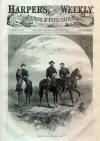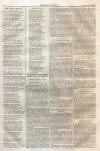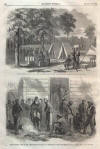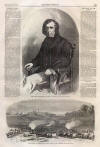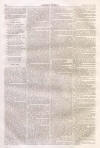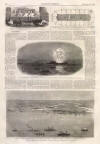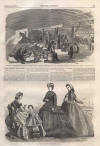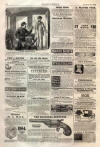Federal Fleet in Mobile Bay
|
|
This Site:
|
HARPERS WEEKLY. [OCTOBER 29, 1864. 700 1. Forward Turret.—2. After Turret—3. Pilot-house.—4. Smoke-stack.—5. Torpedo Rake.--6, 6, 6, 6. Torpedo Guards, with barrels for floating.—7, 7. Forward Closets.—8. After Closet.—9. Opening for Boats.—10, 10, 10.—Hatchways.PLAN OF THE UNITED STATES IRON-CLAD, THE "CHICKASAW."RECEIVING THE WOUNDED ON BOARD THE "METACOMET," AUGUST 5, 1864.OFF MOBILE.WE give on this page several sketches relating to our naval fleet in Mobile harbor. One of these cuts represents the reception of the wounded on board the Metacomet, after passing the forts, August 5. The wounded were then transferred to the Pensacola Hospital. The adjoining illustration is a plan of the Chickasaw--a plan which is exactly re- peated in the Winnebago. The Chickasaw is an ironclad, mounting four guns. Its tonnage is 974 tons. It was built at Boston by AQUILA ADAMS in 1863. The Winnebago was built at St. Louis in the same year. The torpedo guards represented in the sketch are young trees cut down and stripped, with one end of each lashed aboard, and the other ends connected together by transverse pieces. Another sketch represents the Metacomet's boats blowing up the rebel ram Nashville. This cut also gives a view of a portion of the obstructions in the harbor. The lower cut is a view of Mobile city, with the rebel batteries guarding the approaches, and our fleet in the foreground. REFUGEES AT CITY POINT.As our military lines draw closer each day around the doomed cities of Richmond and Petersburg, the effect is seen not only in the number of deserters from the rebel army, but in the quantity of refugees that come into our lines, glad of any opportunity of escape from the horrible scenes of desolation hitherto surrounding them. We give on page 701 a representation of the interior of the United States Sanitary Commission Boat at City Point, Virginia, at a time when a number of these refugees from Richmond are availing themselves of its hospitable shelter. In speaking of them our artist says : "The people here represented appear to belong to two distinct classes. One family seemed to be of what is known as the 'poor whites' in the South ; the other family, if not exactly belonging to the `Chivalry,' were evidently of a different and higher class. While they were staying on board, previous to their departure North, and during which time they received every atten- tion and kindly consideration not only from the officials of the United States Sanitary Commission, but from all who came in contact with them, many opportunities were afforded for eliciting their opinions respecting the state of things between North and South. " The only man among them the head of the family, represented in the extreme back groundwas apparently a simple hearted, ignorant fellow, who was inclined to be very communicative, and who seemed never to have entertained any ill feeling toward our section — content if people would only allow him to cultivate his little patch of ground in peace and safety. The women through-out, however, and even the little children—doubtless well taught hitherto to look upon the Yankees as a set of bugaboos—were surrounded, seemingly at any rate, by an air of restraint and haughty de- pendence, as if they were as much hurt as pleased by the kindnesses showered upon them. When the man was asked by a by stander what object he had in coming North, and if he would not have preferred staying South, one of the young women replied for him, in a rather pert manner: 'The only thing I came away for was them nasty guns you kept firing !' When asked again what notion they had of the Yankees before they saw them, the same young woman replied : We thought you was coming to kill us all and use us bad.' Some one said : `How could you imagine such a thing?' to which she replied : ` How could we know any better? every body said so !" "Not one in this family, confessedly, could read or write, except the man, who said he could read `print' a little. The women and children had all very nice and regular features, and your artist must not think that the pipes I have put in the mouths of some of the former is a matter of fancy. All the women smoked, and common clay pipes were to be seen sticking out of lips far too pretty for such occupation. "Whatever these people may have originally thought of the North and its inhabitants, it is evident that they are now becoming but too glad to exchange for a hideous life in the South the chance of pursuing their future career among us as independent free men and women, even though the insensate prejudices of a life may still cling to them a little longer. Certainly such treatment as these outcasts received from the United States Sanitary Commission at City Point, and as they will doubtless receive every where else could it only be known among their deluded people would be enough to open the eyes of the most ignorant, and to touch the hearts of the most vindictive among them." As an episode to the picture there is introduced in the foreground the figure of a wounded man, attended by Doctors McDONALD and SWALM, of the United States Sanitary Commission—an extraneous and voluntary work which these gentlemen are not unfrequently called on to perform, in addition to their other multifarious and charitable duties. Since GRANT'S last movement the number of desertions from the rebel army has greatly increased. The Rebel Gun-boat " Morgan." THE "METACOMET'S" BOATS BLOWING UP THE REBEL RAM "NASHVILLE," AUGUST 16, 1864.—[SKETCHED BY GEO. WATTERS.]1. Rebel Ram,—2. Battery.—3. Gun-boat "Morgan."—4, 5, 6, 7. Batteries.—8. Hospital Boat.—9. " Chickasaw."—10. "Octorora."—11. "Pinola."—12. " Winnebago."—13. "Metacomet." VIEW OF MOBILE AND THE FEDERAL FLEET IN THE BAY.—[SKETCHED BY GEO. WATTERS.]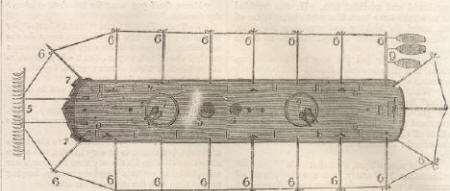 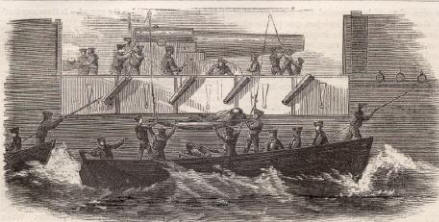 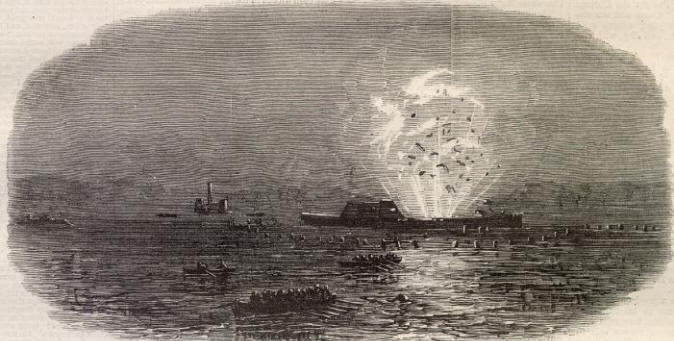 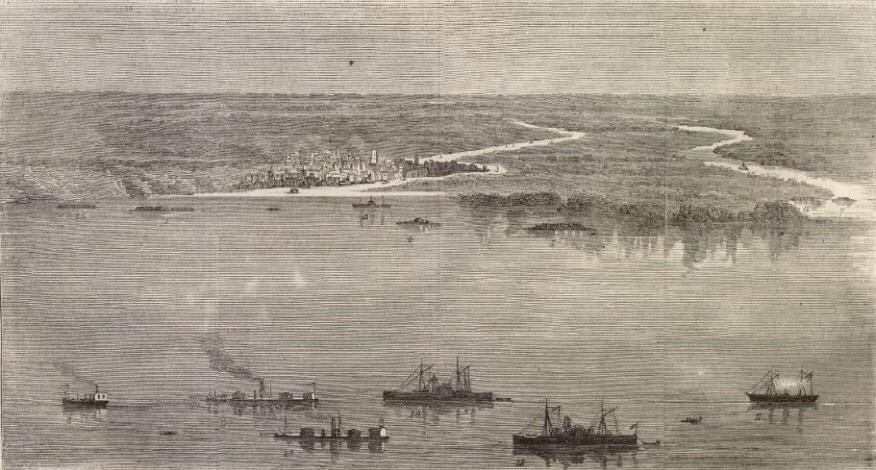 |
||||||||||||||||||||||
|
|
||
|
|
Site Copyright 2003-2018 Son of the South. For Questions or comments about this collection, contact paul@sonofthesouth.net |
|
|
Are you Scared and Confused? Read My Snake Story, a story of hope and encouragement, to help you face your fears. |
||
